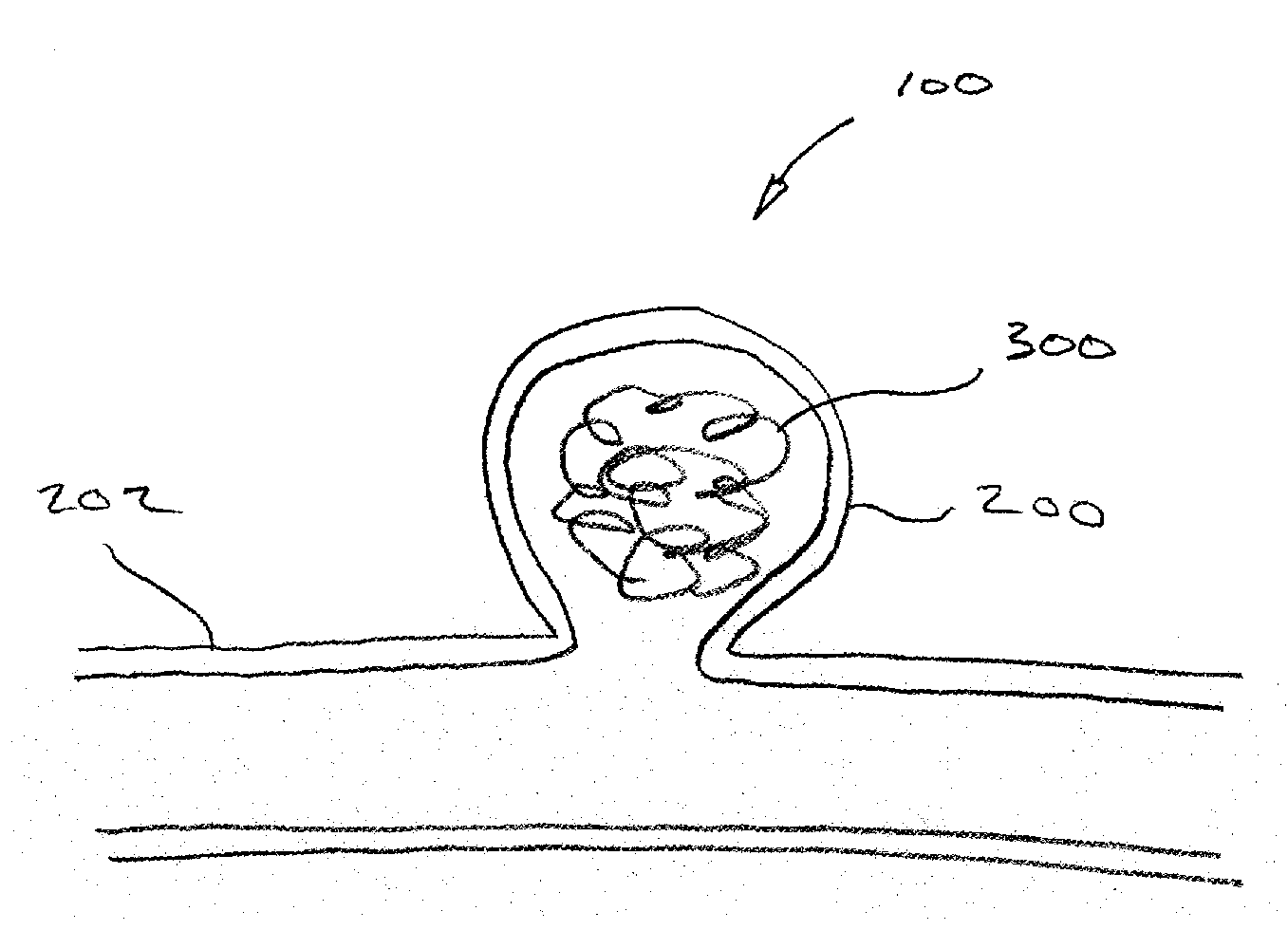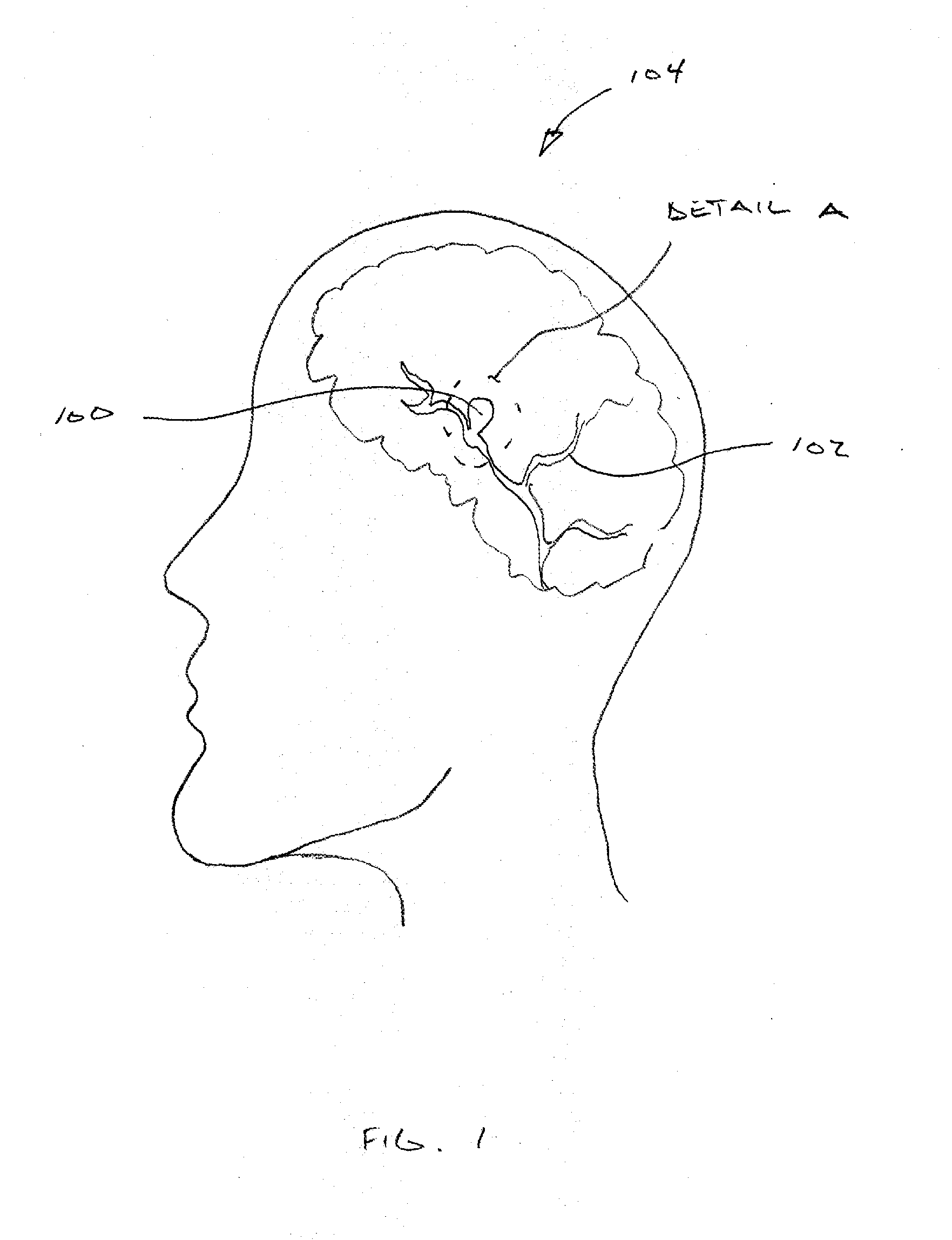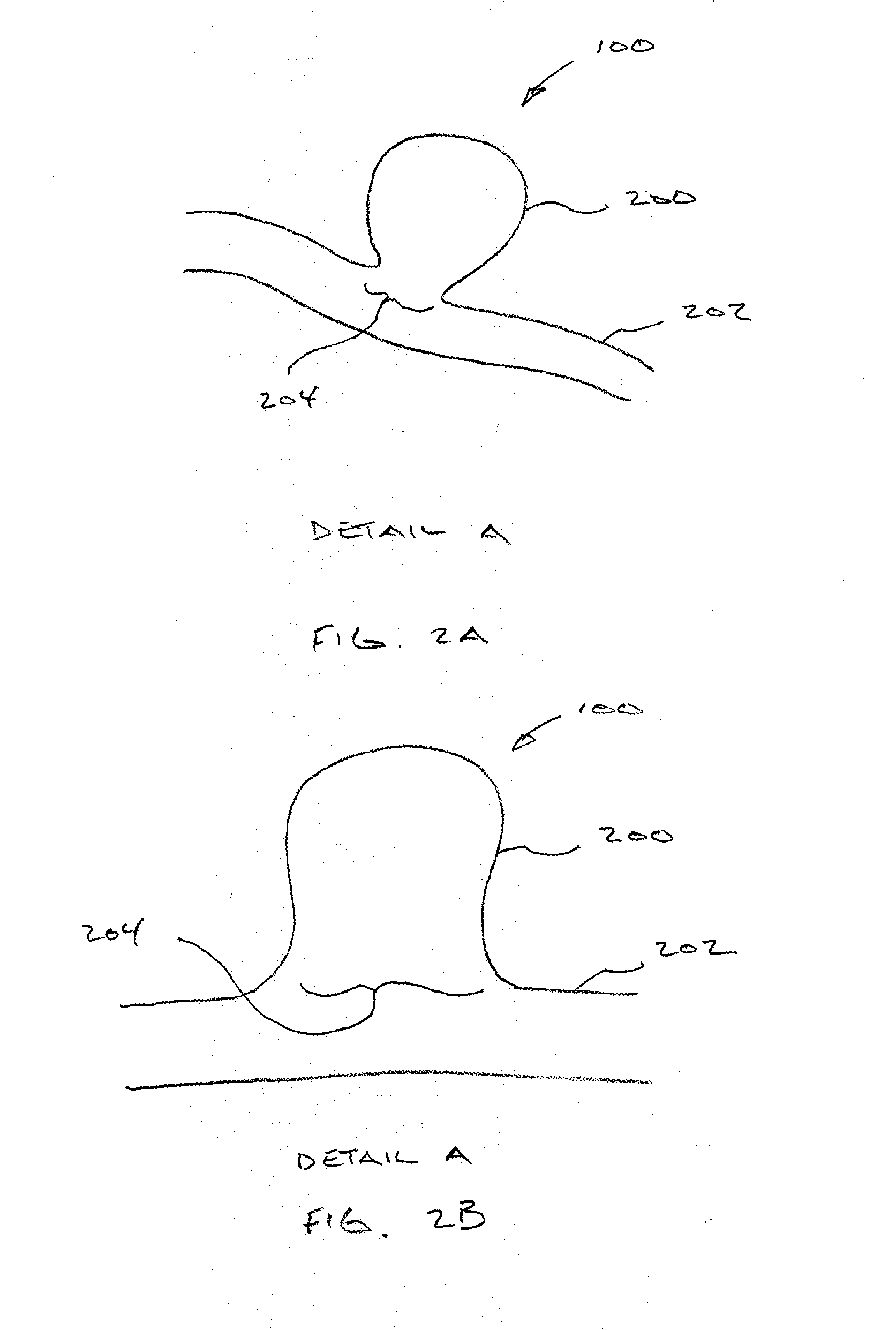Implant for aneurysm treatment
an aneurysm and implant technology, applied in the field of aneurysm treatment implants, can solve the problems of vessel rupture, severe intracranial hemorrhage, and associated loss of perception, and achieve the effects of reducing the risk of strok
- Summary
- Abstract
- Description
- Claims
- Application Information
AI Technical Summary
Benefits of technology
Problems solved by technology
Method used
Image
Examples
Embodiment Construction
[0051]While some embodiments of the present invention are described with specific regard to neurovascular applications, the embodiments of the invention are not so limited and certain embodiments may also be applicable to the treatment of aneurysms in other body vessels. For example, embodiments of the invention may be used to treat aneurysms distal to the origin of the renal arteries, thoracic aortic aneurysms, popliteal vessel aneurysms, or any other body vessel locations.
[0052]In various embodiments, description is made with reference to the figures. However, certain embodiments may be practiced without one or more of these specific details, or in combination with other known methods and configurations. In the following description, numerous specific details are set forth, such as specific configurations, dimensions, and processes, in order to provide a thorough understanding of the present invention. In other instances, well-known processes and manufacturing techniques have not ...
PUM
 Login to View More
Login to View More Abstract
Description
Claims
Application Information
 Login to View More
Login to View More - R&D
- Intellectual Property
- Life Sciences
- Materials
- Tech Scout
- Unparalleled Data Quality
- Higher Quality Content
- 60% Fewer Hallucinations
Browse by: Latest US Patents, China's latest patents, Technical Efficacy Thesaurus, Application Domain, Technology Topic, Popular Technical Reports.
© 2025 PatSnap. All rights reserved.Legal|Privacy policy|Modern Slavery Act Transparency Statement|Sitemap|About US| Contact US: help@patsnap.com



